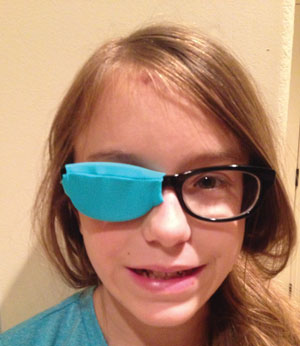 |
|
There are clear disparities in the amount of care received in certain demographic and racial groups when it comes to pediatric eye disease. Photo: Kathleen Foster Elliott, OD. |
Previous studies have shown a difference in pediatric eye disease diagnosis based on race and socioeconomic factors, but only with common diagnoses such as amblyopia and strabismus. In a recent study, researchers addressed the less common, more rare eye conditions from nine years’ worth of data from more than 10 million children aged 19 and younger from a large patient database.
The overall prevalence of a diagnosis among children was 6.7%, a rate that significantly differed by race; more white patients were diagnosed (6.9%) than Black (5.6%) and Hispanic (5.9%) people. The most common eye disease diagnosed was strabismus followed by amblyopia.
When demographic factors were evaluated, household net worth and the geographic region of residence played roles as well, as there was an increase in eye disease diagnoses in households with increased incomes.
“The prevalence of any eye disease diagnosis in children who lived in the Northeast (10.6%) was double that of children who resided in the West (5.3%), and the trend of higher disease diagnosis prevalence in the Northeast persisted across most significant eye disease categories,” the authors explained in their study. “It is unclear from claims data alone whether these diseases are truly more common in this region, or if access to care, healthcare utilization, commercial insurance availability and frequency of visits to eye care providers are higher, thus leading to an increase in the prevalence of the disease diagnosis. Under-utilization and under-diagnosis in regions outside the northeast are likely.”
This is because children in this area, where proportionately less of the population lives in rural settings, have a higher likelihood of receiving an ophthalmic diagnosis, the researchers noted.
An esotropia diagnosis was most common in white patients and least common in Black and Hispanic patients. A previous study showed comparable results, with esotropia appearing to be the most common in whites and least common in Hispanics and Blacks. A similar trend was found in another study as well.
Amblyopia was found to be the most commonly diagnosed eye disease in white children, but the same study found Hispanic children had the highest prevalence of amblyopia, which is “concerning for under-diagnosis in our claims-based study in Hispanic children,” the authors noted.
The authors concluded that this under-utilization of health care in certain demographic and racial groups, as well as by region, should prompt further investigation into the disparities and barriers to care in certain groups.
Pineles SL, Repka MX, Velez FG, et al. Prevalence of pediatric eye disease in the OptumLabs Data Warehouse. Ophthalmic Epidemiology. August 29, 2021. [Epub ahead of print]. |

